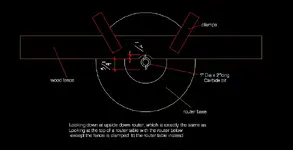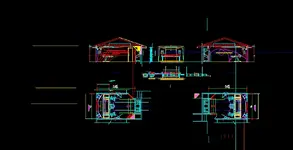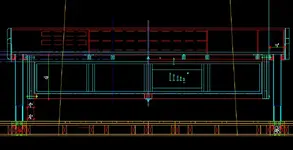Tubedude, this stuff is all irrelevant if you don't have a tablesaw. Cutting panels of melamine with a skill saw is doable, with a clamped on straightedge, but is a REAL pain in the ass, because frankly, SQUARING THE PIECES, is the key to making boxes. ONE out of square piece will cause ALL others to NOT assemble squarely. It is frankly impossible to get 4 cuts on a panel piece perfectly square with a skill saw. Even ply, no difference. Even if you use butt joints, SQUARENESS, AND PARALLEL cuts are a pain in the butt without a table saw and even with one, the very first cut is the end off a sheet. HOW THE HELL DO YOU DO THAT? Unless you have a fence that will reach 95 1/2" from the blade, and even THEN, your simply transferring the OTHER ENDS out of squareness to the end you are cutting.

DOH!! Hence the use of PANEL SAWS for squaring the sheet, NOT table saws.
AND think of this. In a cabinet shop, SQUARING two edges on a panel is the first thing you do, as most people think that a 4x8 sheet is already square from the manufacturer. Nothing could be further from the truth. In reality, all panels come from the factory with the width out of square to the length. There for you must square an end cut first. Otherwise, all cuts using the factory edge at the end will transfer the out of square edge to all other parallel cuts, which in turn, transfer the out of squareness, to perpendicular cuts. Thats why most DIY'er boxs and cabinets come out like.....well, you see the problem.
Its only when you go to assemble the pieces that assumptions become evident

CABINET makeing is NOT as easy as everyone thinks. Even a simple box, without the pieces being perfectly in square and parallel, is a lesson in assembly frustration as 3/4" panels do NOT want to bend to take up the gaps. Also consider this. There are 6 faces to a box. If all of them are out of square. the first two pieces you assmble starts spiraling the square, the third piece, depending on rotation, either doubles the spiral, or sends the square back into the same plane, but out of square perpendiculary

The FOUTH piece is where you begin to see the REAL problem. Now try and line up the faces. Impossible if you've screwed the previous pieces. So take a tip. IF you are intent on building these simple boxs, cause thats what they are, have a cabinet shop cut the pieces for you. They usually have a panel saw that squares the sheet right from the gitgo. Then, YOU can ROUTE the DADOS, NOT CUT THEM ON A TABLE SAW!!! Dado blades are the worst thing you can do on sheet goods. Only for hardwood boards, and even then, most shops use router tables for this type of machining. Here is how to do it without a router table. You need a FENCE on the router. Some come with one. Heres how to make one.
Simply clamp a small board to the router behind the bit, on one side of the router faceplate, turnon the router, and SLOWLY pull the board into the bit. For a 3/4" wide dado, you need to perfectly line up the fence face perpendicularly to the carbide cutter. See the picture. In reality, its better to use a 1" wide routerbit, and cut into the fence 1/4", which now will trim the dado perfectly. Your depth and width of cut determines the accuracy of your pieces at assembly. Route TEST pieces first, and check the width and depth. Well, with out writing a book on this area of woodworking, this is about all I can do in this scope of woodworking. Many people think this stuff is easy, and it is IF you understand EXACTLY what it is you are trying to do and have the tools to do it. BOXs are easy if you understand SQUARENESS. All fixtures, furniture, cabinets and other types of casegoods depend on this, otherwise you might as well buy them.
Ok heres a pic of the router. Actually, a router table is MUCH easier and safer to do this stuff, but in a pinch it will do.
fitz



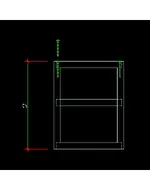
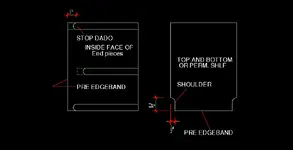
 DOH!! Hence the use of PANEL SAWS for squaring the sheet, NOT table saws.
DOH!! Hence the use of PANEL SAWS for squaring the sheet, NOT table saws.